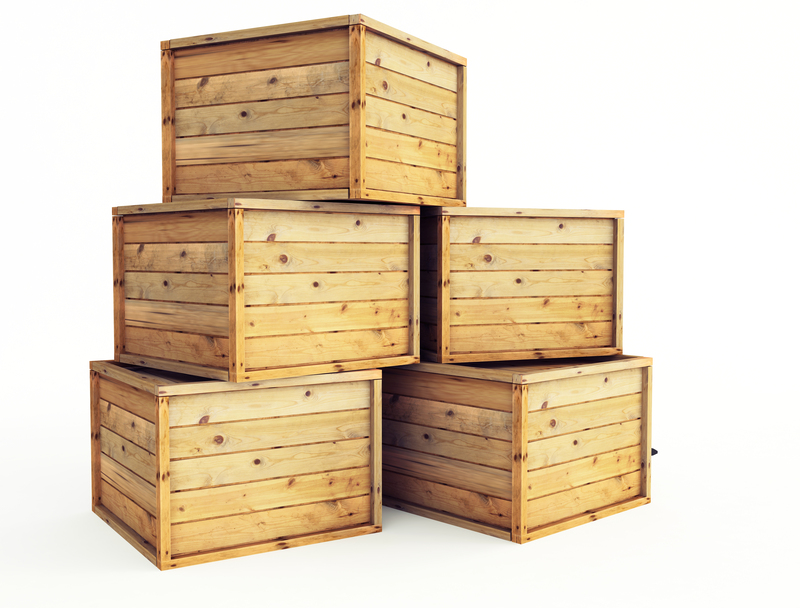Compact Packing Insights for a Stress-Free Home Transfer
Embarking on a home transfer can be both exciting and overwhelming. The secret to ensuring a seamless move is in the art of compact packing. Whether you're relocating to a new city or just moving across town, efficient packing strategies can drastically reduce stress, save time, and help avoid last-minute chaos. In this comprehensive guide, we will delve into compact packing insights and professional techniques that guarantee a stress-free home transfer.
Why Compact Packing Makes All the Difference
Packing may seem straightforward, but without the right approach, it can spiral into disarray quickly. Compact packing isn't about squeezing everything into as few boxes as possible--it's about organizing your belongings methodically to maximize space, safeguard your possessions, and streamline the entire moving process.
- Efficient space use reduces the number of boxes needed and saves on transportation costs.
- Minimized damage thanks to proper wrapping and placement.
- Quicker unpacking as items are grouped logically.
- Less stress because everything is easy to find and move.
Let's explore expert home moving packing tips that can help guide your journey from one home to another with ease.

Preparation: The Foundation for a Stress-Free Home Move
1. Start With a Plan
Before you touch a box, draft a moving checklist. This plan should outline timelines, assign packing responsibilities, and note essential supplies. A well-structured strategy is the backbone of compact packing and ensures you miss nothing amidst the rush.
- Inventory your belongings: List everything you plan to move, donate, or discard.
- Set milestones: Assign target dates for each room.
- Gather supplies: Pro boxes, tape, markers, bubble wrap, and specialty containers.
2. Declutter: Less Stuff, Less Stress
One of the best compact packing strategies is minimizing what you have to move. Go through every room--closets, kitchen, garage--and purify your possessions.
- Donate items in good condition but no longer needed.
- Sell furniture or electronics you won't use.
- Recycle or dispose carefully of broken or obsolete items.
Not only does this lighten your load, but it also helps you start fresh at your new place.
Supplies: Essential Tools for Compact Packing
Investing in the right packing materials helps optimize space and protect valuables. Here's what you'll need:
- Sturdy boxes in various sizes
- Bubble wrap and packing paper
- Vacuum storage bags for clothes and linens
- Stretch wrap for securing furniture
- Labels and waterproof markers
- Resealable plastic bags for screws and small accessories
Don't forget specialty boxes for fragile items, such as dish packs, wardrobe boxes, and TV cartons.
Room-by-Room Guide for Compact Home Packing
Living Room & Bedrooms
- Disassemble large furniture to save space; keep screws and bolts in labeled plastic bags taped to the main item.
- Use vacuum-seal bags for bedding, pillows, and off-season clothing.
- Wrap fragile items like decor pieces and lamps in bubble wrap; nest smaller pieces inside larger ones if safe.
- Pack books spine-down in small boxes, balancing weight.
- Sort drawers: Leave clothes in drawers, wrap with plastic for easy unpacking.
Kitchen
- Bundle utensils with rubber bands; wrap glassware individually.
- Stack pots and pans; fill gaps with towels.
- Use original boxes for appliances when possible; if not, wrap components separately and label parts clearly.
- Pack pantry goods tightly in small boxes; avoid liquids unless sealed.
Bathrooms
- Seal toiletries in zip-lock bags to prevent spills.
- Wrap mirrors and fragile cosmetics in plenty of bubble wrap.
- Use a First Night Box for essentials: toothbrush, charger, medications, towel, a fresh change of clothes.
Garage and Utility Spaces
- Reel up cords, label all tools, and remove gas or liquid from equipment.
- Group small hardware in containers by category.
- Tightly bundle garden tools and label bundles for easy identification.
Expert Tips for Maximizing Space When Packing for a Move
- Layer smartly: Place heavier items at the bottom of boxes; fill gaps with light, soft items.
- Utilize every inch: Store socks, cords, gadgets, or jewelry inside shoes or cookware.
- Wrap with intent: Use towels, t-shirts, or bedsheets as substitutes for bubble wrap when packing fragile objects.
- Label smart: Mark each box with contents, destination room, and special handling instructions.
- Keep essentials accessible: Set aside a box with necessary documents, chargers, and emergency supplies.
Compact Packing Checklist for a Seamless Move
Staying organized is crucial for a successful, stress-free home transfer. Use this ultimate packing checklist to track your progress:
Before You Start
- Inventory all belongings
- Shed or donate unused items
- Schedule utility transfers/disconnections
- Notify change of address to banks, schools, and subscriptions
Packing Supplies
- Boxes (various sizes)
- Packing tape and dispenser
- Protective wrap and paper
- Permanent markers and labels
- Resealable bags for hardware and small items
Room-by-Room Action
- Pack by season, frequency of use, or category
- Prioritize non-essentials first
- Disassemble furniture early
- Protect devices and electronics
Final Steps
- Check all rooms, closets, and drawers before move-out
- Supervise movers and check inventory at new location
- Unpack essentials first, then by priority
Common Mistakes to Avoid During Compact Packing
- Overfilling boxes: Heavy boxes are hard to lift and more likely to burst.
- Neglecting to label: Unmarked boxes slow down the unpacking process and cause confusion.
- Mixing fragile and heavy items: Always separate or cushion delicate goods to prevent breakage.
- Forgetting about essentials: Pack an overnight bag with toiletries, important documents, and a change of clothes.
- Waiting until the last minute: Procrastination leads to rushed, disorganized packing, increasing stress and risk of loss.
Avoiding these errors will save you time and potential headaches throughout your home transfer.
Troubleshooting Special Items: The Compact Packing Approach
Packing Electronics
- Whenever possible, use original packaging with molded inserts.
- Bundle cables, label and place them in zip-lock bags.
- Remove batteries from devices to avoid leaks.
- Back up essential data before disconnecting computers or drives.
Handling Artwork & Fragile Pieces
- Wrap each item separately using bubble wrap and cushioning material.
- Place mirrors and frames between cardboard sheets for extra support.
- Store upright and clearly mark "Fragile" on each box.
Moving Plants
- Water plants a couple of days before the move (not right before).
- Use open-topped boxes lined with plastic.
- Move them last to minimize stress and temperature changes.
Unpacking: Tips for a Smooth Set-Up in Your New Home
The benefits of compact packing extend into your new house. Here's how to make your post-move setup effortless:
- Unpack basics first: kitchenware, bedding, toiletries, and work essentials.
- Set up beds and major furniture right away to restore comfort.
- Organize by room or function, referring to your labels and inventory lists.
Take your time to decorate and arrange gradually, letting your new space evolve to suit your lifestyle.

Frequently Asked Questions About Compact Packing and Home Transfers
What is the most efficient way to pack for a home move?
The most efficient method is to declutter first, use proper packing materials, and organize items by category and room. Vacuum-seal bags, sturdy boxes, and detailed labels are game-changers for compact, stress-free packing.
How early should you start packing for a move?
Ideally, begin 4-6 weeks before moving day. Start with rarely used rooms and seasonal items, gradually progressing to daily essentials.
Should I hire professional packers?
If your budget allows or you're on a tight schedule, professional packers can expedite the process and ensure everything is protected. However, following these compact packing tips for home transfers can deliver similar results with personal effort.
Conclusion: Your Path to a Carefree Home Transfer
Mastering compact packing insights equips you to handle your home transfer like a pro, turning an often stressful event into an organized adventure. By planning ahead, decluttering, and implementing the room-by-room strategies described above, you'll enjoy a streamlined relocation with less waste, damage, and confusion.
Remember, the keys to a stress-free home transfer lie in preparation, organization, and a calm, methodical approach. With every box you pack efficiently, you are one step closer to new beginnings in your new sanctuary!
Ready for your move? Refer back to these tips and savor the peace of mind that comes with compact, smart packing!